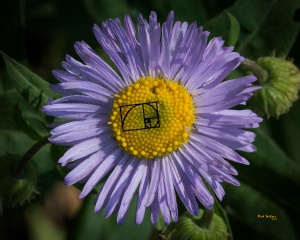 At its essence, science is the study of how the universe and all the things in it work. Mathematics is the language used to reveal and relate what scientists discover by helping them find relationships in the world. At its most basic, math is a tool that reinforces scientific discoveries. If we think about math as the language of science, the beautiful marriage of numbers and nature is something that shouldn’t surprise us.
At its essence, science is the study of how the universe and all the things in it work. Mathematics is the language used to reveal and relate what scientists discover by helping them find relationships in the world. At its most basic, math is a tool that reinforces scientific discoveries. If we think about math as the language of science, the beautiful marriage of numbers and nature is something that shouldn’t surprise us.
0, 1, 1, 2, 3, 5, 8, 13, 21, 34, 55… a one of a kind sequence!
Are you familiar with it? Can you find the pattern? Known as the Fibonacci sequence for its discoverer Leonardo (Fibonacci) Pisano, who is known as one of the greatest European mathematicians of the middle ages, these numbers appear almost everywhere you look, if you have the eyes to see them. Fibonacci first discovered this sequence while observing the exponential breeding patterns of his domestic rabbits! He noticed that after each proceeding month, the breeding pairs of rabbits grew from 1 pair (0+1) to 2 pairs (1+1) to 3 pairs (1+2) to 5 pairs (2+3) and so on. He later found this sequence of numbers to be ubiquitous in nature: the growth of branches on trees and shrubs follow the Fibonacci pattern, the arrangements of rose petals occur in 5s and 8s, pinecone scales grow in swirls of 8s and 13s, many plants arrange their leaves in a sequence of 3s, 5s and 8s and the seeds of sunflower heads grow in 21s, 34s, 55s or higher!
Even the growth of the human body follows this sequence. If you measure your pointer finger, starting at the tip and moving down with your ruler, you will find this sequence hidden between the joints! From the tip of your finger to the first joint, you will find that it measures about 1 inch (2 mm). To the next joint you will measure about 2 inches (3mm), from there to right above your knuckle is 3 inches (5 mm) and if you continue to where your pointer finger joins up with the rest of the fingers, (just above where your wrist bends), you will find the ruler reads about 5 inches (8 mm)!
Another way to visualize this sequence is to turn it into a ratio, 1.618 to be exact. Known to many as the Golden Ratio and represented by the symbol known as Phi, this number is found by dividing any of the Fibonacci numbers by the previous number in the sequence, (ex. 8/5=1.6 or 13/8=1.625). The farther up in the sequence you go, you find the numbers always divide to approximately 1.618. For the artistic minds out there, the sequence can also be represented by the Golden Spiral, which can be constructed by drawing a rectangle with a height to width ratio of 1.618. The rectangle is then divided to create a square and a smaller rectangle and the process is repeated until you arrive at a center point. The spiral is then constructed by drawing an arc that touches the points at which each of these rectangles are divided into a square and a smaller rectangle.
This famous shape has most notably been conveyed by the shell of the chambered nautilus, an ancient mollusk that has lived on Earth for approximately 500 million years. However, there is some discrepancy as to whether this shell truly follows the sequence. In fact, if a standard Golden Spiral is superimposed onto a nautilus shell, one can easily tell that they are not a match. But the beautiful thing about math is there is always more than one way to an answer. The traditional golden spiral expands the width of each section by 1.618, (Phi), with every quarter, (90 degree), turn. However, a Golden Spiral can also be constructed to expand with Golden Ratio proportions with every full 180 degree rotation. The width of the spiral from the center becomes 2.618, which is Phi squared. Another full rotation expands the length from the vortex by Phi squared, from Phi to Phi cubed, and so the pattern of expansion continues.
Not every nautilus shell is created equal, just as with everything, there are variations and imperfections in their shapes. You’d likely have to search quite a few beaches to find a nautilus shell whose spiral fits any Golden Ratio proportion perfectly, and may never find one. Perhaps it’s really the visual appearance that has led many to view it as one of the most perfect patterns in nature. But the lesson here is not about perfection, it’s about connection and how math can show us this with incredible accuracy. The Fibonacci sequence is just one way of visualizing this interconnection of the natural world in which we are all inescapably, tightly bond.
Nicole Abrams is the Girls in Science Coordinator at Walking Mountains Science Center. She loves fostering a sense of place in the natural world with the young ladies she mentors, inspiring them towards science-loving, sustainable lifestyles.









